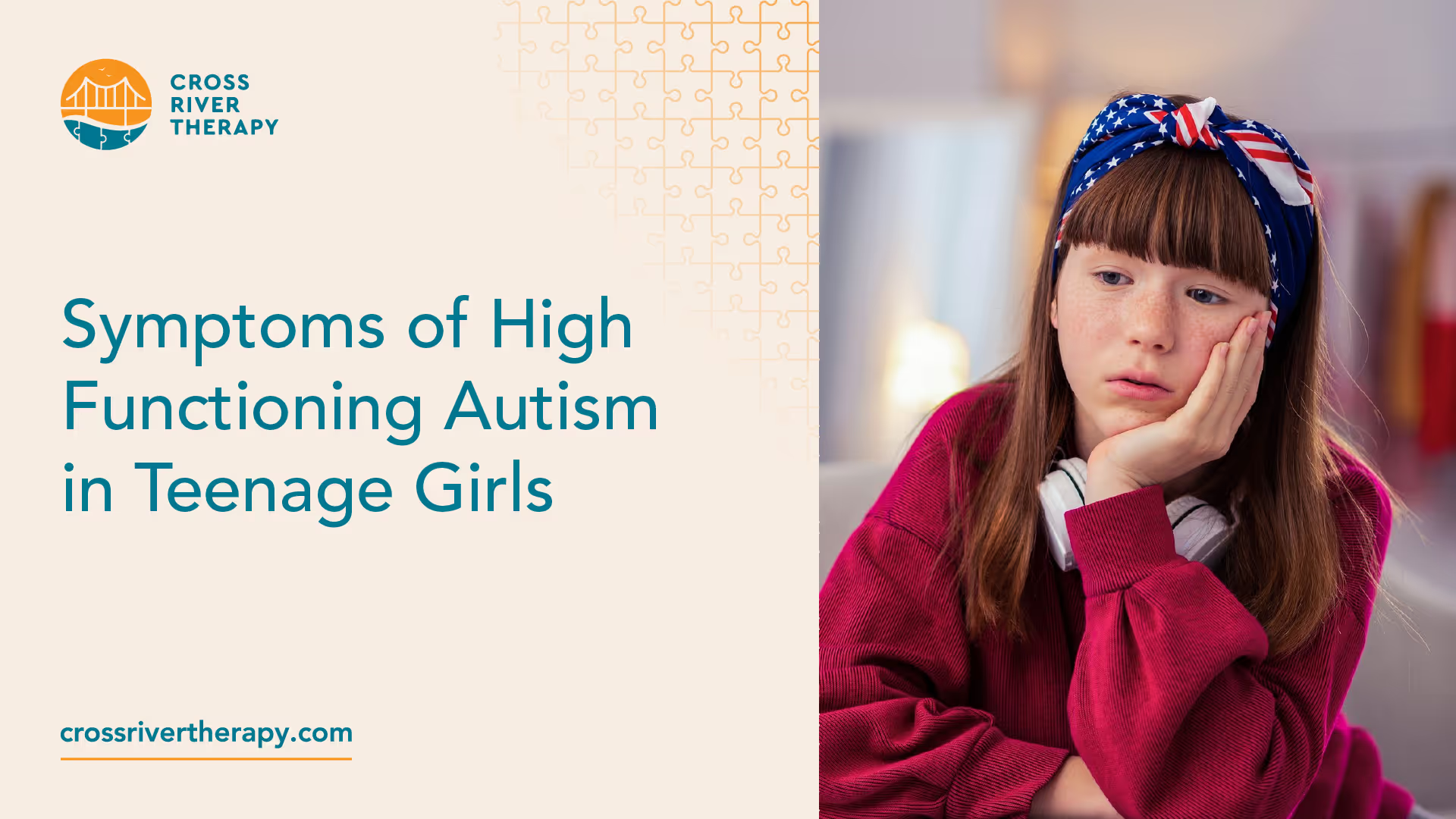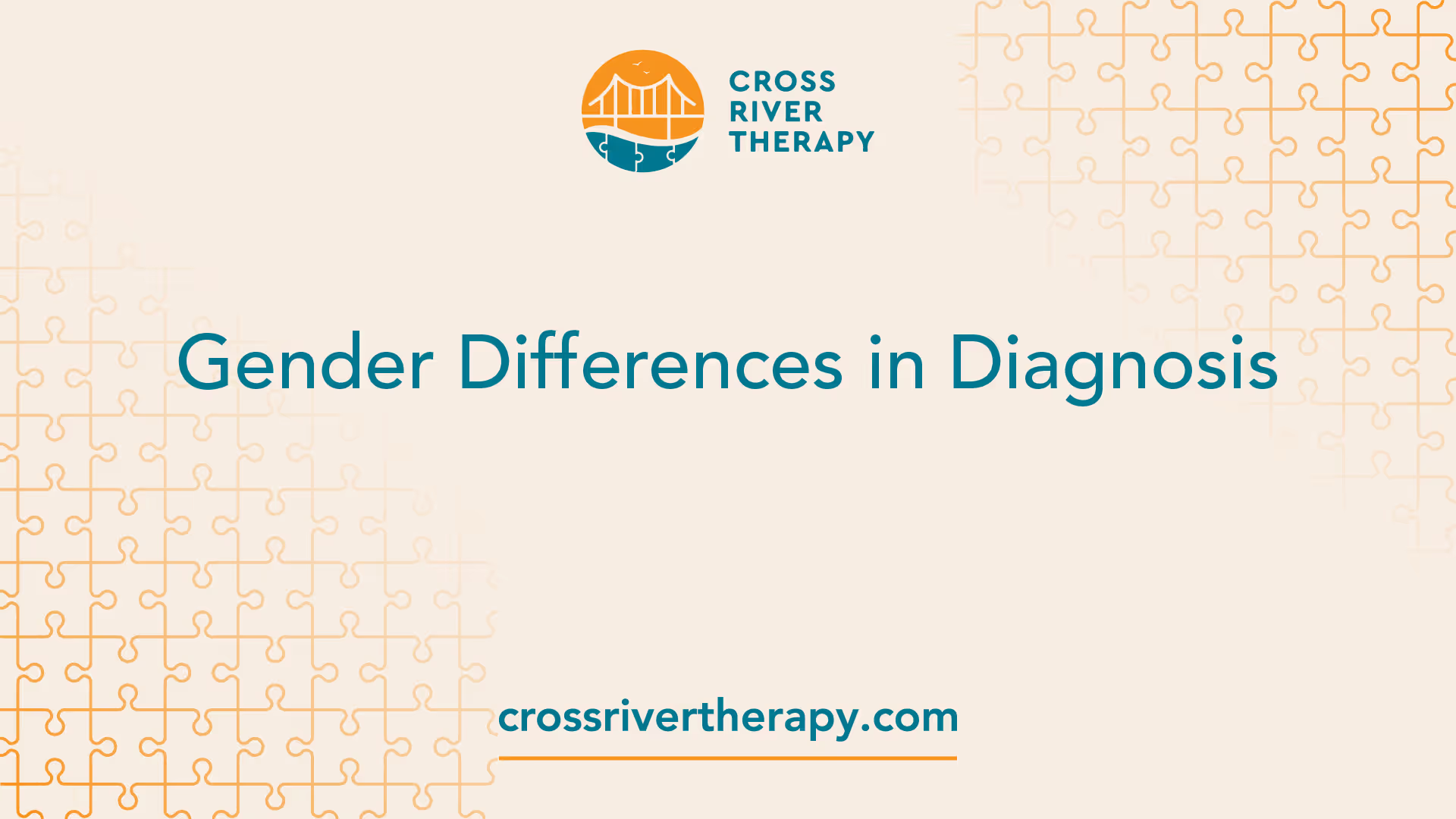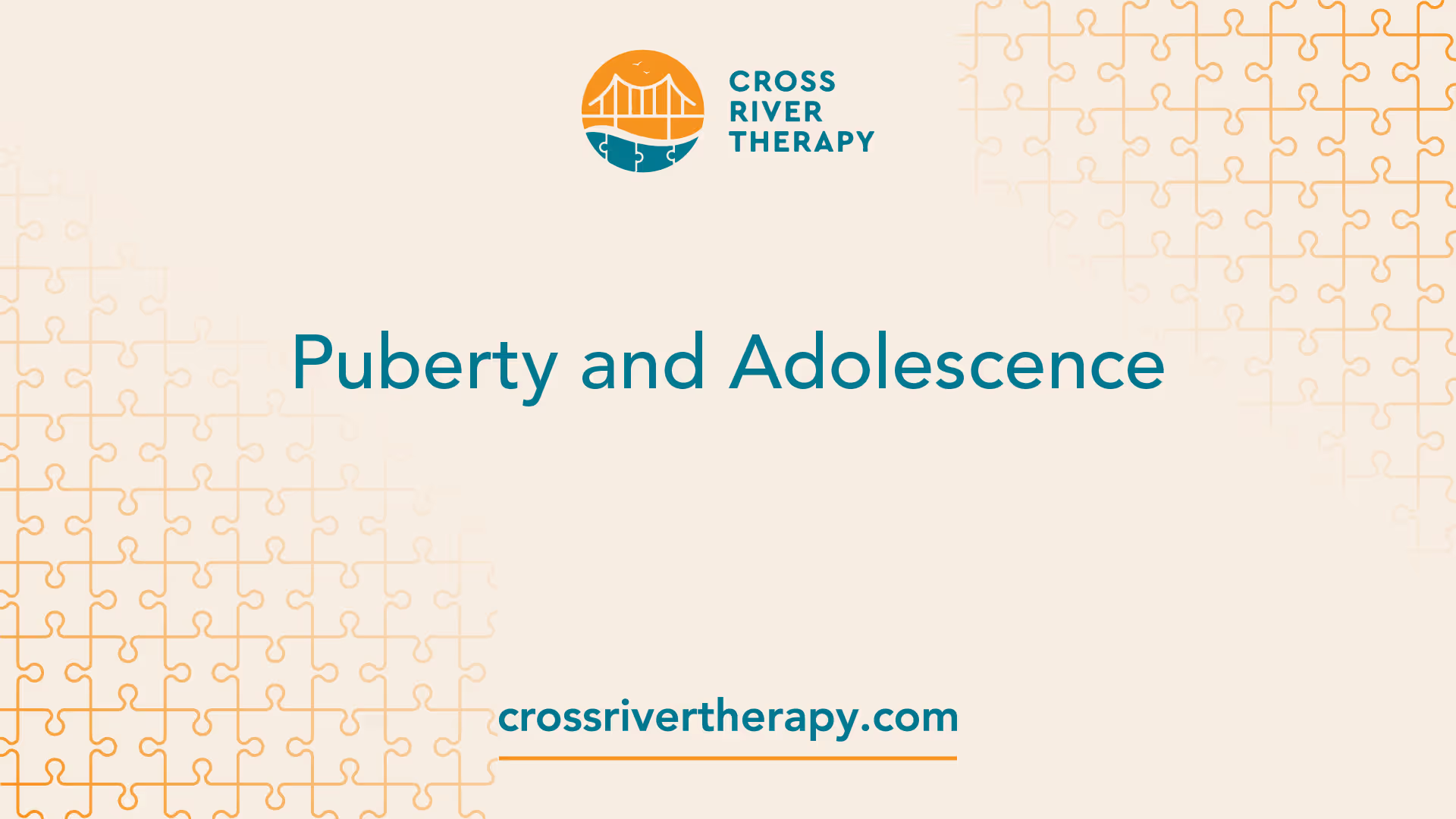Symptoms of High Functioning Autism in Teenage Girls
Unmasking symptoms of high functioning autism in teenage girls - a guide for parents to navigate hidden struggles.
Recognizing Symptoms
Understanding the symptoms of high functioning autism in teenage girls is the first step to providing the necessary support for them. These symptoms can range from social challenges to sensory sensitivities.

Challenges in Social Situations
Teenage girls with high-functioning autism often experience fear and anxiety in social situations, which can manifest as difficulty making friends, trouble fitting in with peers, or disinterest in activities or conversations going on around them. They might also show signs such as difficulty sharing with others, speaking in a monotone voice, and discomfort with sarcasm, joking, and small talk.
An inability to maintain eye contact without discomfort, trouble assessing social cues, and a general sense of anxiety in social settings are also common indicators of high-functioning autism in teenage girls. For more detailed information, you can visit our article on social challenges in teenage girls with high functioning autism.
Sensory Sensitivities
Sensory sensitivities are another common symptom of high-functioning autism in teenage girls. They might be especially sensitive to sensory stimuli like bright lights, loud noises, and strong smells. Unusual movement patterns, like toe walking, and a resistance to touch are other signs of sensory sensitivities.
Moreover, these girls might also show symptoms like frequent stimming or fidgeting, trouble with fine motor activities, and an excellent memory but with an unawareness of personal space. In everyday life, they might have an inability to perceive danger or ulterior motives.
Recognizing these symptoms early can lead to a better understanding of the unique challenges these girls face and allow for more effective interventions. For a more comprehensive understanding of the symptoms of high functioning autism in teenage girls, you might find our article on characteristics of high functioning autism in teenage girls helpful.
Gender Differences in Diagnosis
When it comes to diagnosing high functioning autism, there are significant gender differences that can impact the detection and diagnosis process. Understanding these differences can help parents, educators, and healthcare providers better identify and support teenage girls with high functioning autism.

Masking Symptoms in Girls
Recent studies have highlighted that girls with autism, particularly those with normal intelligence levels, often "mask" their symptoms. This means they learn how to cover up or overcompensate for autistic traits in order to appear more neurotypical, or seemingly "normal" to others.
This masking of symptoms can make it more challenging to identify the signs of high functioning autism in teenage girls. Parents and educators need to be aware of the subtler characteristics of high functioning autism in teenage girls and ensure that they are not overlooked or dismissed as just part of a girl's personality or typical teenage behavior.
Delayed Diagnosis
The tendency for girls with high functioning autism to mask their symptoms often leads to a delayed diagnosis. In fact, boys are four times more likely to receive an autism diagnosis than girls, with genetic factors potentially contributing to this difference [3].
Furthermore, cultural expectations that girls should behave in quieter and less assertive ways than boys, as well as diagnostic criteria primarily focused on boys and men, can result in autistic girls being misdiagnosed or undiagnosed.
Interestingly, a predictive model suggests that 39% more women should be diagnosed with ASD, but biases among healthcare professionals and diagnostic tools contribute to missed diagnoses in girls.
This delay in diagnosis can result in girls not receiving the support they need in a timely manner. Addressing these gender biases in autism diagnosis is vital to ensure that girls with high functioning autism are correctly identified and given the necessary support, whether it be in managing social challenges or dealing with communication difficulties.
Puberty and Adolescence
Navigating puberty and adolescence can be challenging for teenagers with high functioning autism. During this transformative period, these individuals may struggle with understanding and coping with physical changes. The additional complexity of sexual education and hygiene becomes crucial, especially for teenage girls with autism.

Sexual Education and Hygiene
Teenagers with autism experience the same sexual urges and attractions as their neurotypical peers. Therefore, it is crucial to provide them with appropriate sexual education. For girls with autism, this includes teaching them about menstruation and providing them with tips for managing their periods, such as the use of tampons or sanitary pads.
Additionally, hygiene education is a necessary aspect of this learning phase. Some teenagers with autism may struggle to understand the importance of maintaining personal cleanliness. Therefore, it is essential to impart hygiene tips to them, particularly related to menstruation.
Coping with Physical Changes
Physical changes during puberty can be a source of distress for teenage girls with high functioning autism. These individuals may find it challenging to adjust to these changes and understand their implications. It's important to communicate with them about these changes and reassure them of their normalcy [3].
This period can bring about changes in social dynamics and expectations as well. The social struggles that are often a part of the symptoms of high functioning autism in teenage girls can be further amplified during this phase. They may require additional support to navigate these changes, particularly in terms of social communication and understanding social cues.
While puberty and adolescence can be a challenging time, it's also an opportunity for growth and learning. With the right support and understanding, teenage girls with high functioning autism can navigate this period successfully. For a more detailed understanding of the characteristics of high functioning autism in teenage girls, you can visit our article here.
Emotional Regulation
Recognizing and managing emotions plays a significant role in the lives of teenage girls with high functioning autism. It's crucial to understand how they experience and cope with feelings of anxiety and stress, as well as how to support them in dealing with emotional dysregulation.
Managing Anxiety and Stress
Teenagers with high functioning autism often worry or feel stressed about things that might not be as concerning for typically developing teenagers. This could include practical skills, changes in routine, social situations, and transitions, which can significantly impact their daily lives [5].
Signs of anxiety in autistic children and teenagers can appear similar to common characteristics of high functioning autism in teenage girls, including stimming, special interests, resistance to changes in routine, and an increase in challenging behavior when feeling anxious.
Strategies to help manage anxiety include teaching these teenagers to identify physical signs of anxiety in their bodies. Visual tools, such as drawing outlines of a person's body, can help them understand their feelings better.
Additionally, opportunities to practice handling anxious situations, such as going to the hairdresser or engaging in social interactions, can help autistic girls understand and feel more prepared for triggering situations.
Dealing with Emotional Dysregulation
Emotional dysregulation, or difficulties in managing emotional responses, is another symptom commonly seen in teenage girls with high functioning autism. This can manifest as an intense reaction to a minor event, difficulty calming down after getting upset, or inappropriate reactions to social situations.
Adopting coping mechanisms such as deep breathing exercises, progressive muscle relaxation, or engaging in calming activities can be beneficial. Furthermore, providing a safe and understanding environment where they can express their emotions without judgment can also aid in their emotional regulation.
Understanding these challenges, empathizing with their struggles, and providing supportive interventions are essential steps in helping teenage girls with high functioning autism navigate their emotional landscape. For more information, refer to our articles on signs of high functioning autism in teenage girls and social challenges in teenage girls with high functioning autism.
Support and Interventions
Providing adequate support and implementing effective interventions can significantly improve the quality of life for teenage girls with high functioning autism. This support can take many forms, including outdoor activities and collaboration with educators.
Importance of Outdoor Activities
Outdoor activities and sports can play a crucial role in the lives of autistic teens. These activities can provide a much-needed break from their routine, offer opportunities to learn new things, and boost self-esteem. Activities such as swimming or wall climbing can be beneficial, but it's essential to prioritize safety due to some teens with autism having no concept of danger.
It's important to choose activities that align with the teenager's interests and comfort level. For example, a teen who enjoys water might benefit from swimming lessons, while another may prefer exploring nature through hiking. The goal is to create a rewarding and safe experience that encourages the development of new skills and confidence.
For more information on the benefits of outdoor activities for autistic teens, check out our article on characteristics of high functioning autism in teenage girls.
Educator Collaboration
Educators play a pivotal role in supporting teenage girls with high-functioning autism. It's crucial for teachers to understand the unique challenges faced by these students, such as sensory sensitivities, difficulties with organization and time management, and challenges with emotional regulation [6].
Teachers can provide support in several ways, including clear and explicit instructions, predictable routines, opportunities for social skills training, and a quiet space for retreat when overwhelmed.
Moreover, educators should collaborate with parents, caregivers, and support professionals to create a supportive and inclusive environment, ensuring individual needs are met in the classroom setting.
Schools can also take measures to ensure autistic girls thrive in educational settings, including providing training for those who support them. The Department for Education’s National strategy for autistic children, young people, and adults emphasizes the need for identifying and supporting autistic girls.
For more insights on the role of educators in supporting autistic students, read our article on communication difficulties in teenage girls with high functioning autism.
Unique Challenges
Teenage girls with high-functioning autism face unique challenges, particularly in the realm of social communication. Understanding these struggles is key in offering the right support and interventions.
Social Communication Difficulties
Girls with high-functioning autism often struggle with social communication, understanding social cues, and forming friendships. They may exhibit social withdrawal, anxiety, depression, and may also have intense interests in specific topics. These girls may also find changes in routine particularly challenging.
In many cases, they may mask their symptoms by imitating their peers or staying quiet in class, leading to a delay in their diagnosis. Recognizing these signs of high functioning autism in teenage girls can provide a better understanding of their unique experiences and ensure they receive the support they need.
Strategies for Social Skills
Addressing the social communication difficulties faced by teenage girls with high-functioning autism requires a multifaceted approach. Teachers and caregivers can support these girls by providing clear and explicit instructions, creating predictable routines, offering opportunities for social skills training, and providing a quiet space for them to retreat when overwhelmed.
Collaboration between educators, parents, and support professionals is critical in creating a supportive and inclusive environment. This ensures that the individual needs of these girls are met in the classroom setting, allowing them to thrive academically and socially.
For more information on the unique characteristics of high functioning autism in teenage girls, and the social challenges they may face, see our article on social challenges in teenage girls with high functioning autism. Additionally, to understand more about the communication difficulties they may encounter, we have a detailed article on communication difficulties in teenage girls with high functioning autism.
Remember, every girl with high-functioning autism is unique, and will have her own set of strengths and challenges. Understanding these can empower her to reach her full potential while navigating the world with autism.
References
[1]: https://www.thrivingwellnesscenter.com/blog/highfunctioningautismchecklist
[2]: https://www.verywellhealth.com/signs-of-autism-in-girls-260304
[3]: https://www.autismparentingmagazine.com/autism-in-teens-puberty-expectations-symptoms/
[4]: https://www.verywellhealth.com/differences-between-boys-and-girls-with-autism-260307
[5]: https://raisingchildren.net.au/autism/health-wellbeing/mental-health/anxiety-asd
[6]: https://www.readingrockets.org/topics/autism-spectrum-disorder/articles/teachers-brief-guide-teaching-students-high-functioning
[7]: https://www.autism.org.uk/advice-and-guidance/professional-practice/girls-wellbeing



